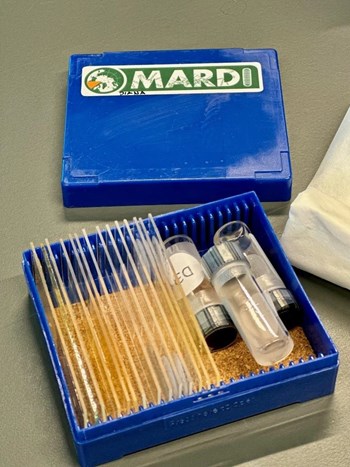Over the last few decades, hundreds of Arctic surface sediment samples have been analyzed for the purpose of building diatom-based calibration data sets to reconstruct past oceanic conditions. This work has been carried out by several independent research groups worldwide, including the applicant. As diatom identification is challenging, is constantly being updated, and requires years of experience, it is likely that these data sets have somewhat different diatom taxonomies. To enable the full potential of these data sets for both ecological studies and quantitative, diatom-based surface ocean reconstructions, one of the most important tasks is to align and integrate these various surface datasets, thus creating an open-access, pan-Arctic diatom dataset. For this purpose, an expert group called Marine ARctic Diatoms (MARDI) was created and funded by PAGES to organize hands-on workshops for experts worldwide.
The 1st MARDI workshop was hosted at University of Helsinki, Finland as part of the Ecosystems and Environment Research Programme (ECOENV) in June 2023. This hands-on workshop involved lab microscopy sessions, as well as presentations and lectures on taxonomy and methodology. There were altogether 16 participants from all over the world and online guests. Diana W. Krawczyk participated in the workshop and additional, pre-workshop consultations with the taxonomic group from 4th to 10th June 2023.

The main workshop sessions were focused on participants presenting difficult diatom taxa with detailed photographs from their samples and taxonomic explanations. More than 30 common Arctic diatom species were discussed, and a final exercise was implemented, where the group was anonymously voting for a presented species name to validate the expertise. We were also introduced to the website ‘diatoms.org’, where everyone can contribute as taxonomist. Our concluding task, to be carried out in our own institutes during the following year, is to analyze 17 samples from different (unknown to the taxonomists) locations and count diatom species following the same method. This way we can work towards verifying observer bias, common in taxonomic studies. We are asked to make photographic documentation of the difficult species and publish the results on the ‘diatoms.org’ website for others to revise and to build a good database for future studies.
This years’ workshop will be followed by several online open-to-all mini-workshops on taxonomically challenging key taxa, and a next, 2nd MARDI workshop. The 2nd MARDI workshop will be dedicated to integrating and agreeing upon a common taxonomy for all datasets. A key outcome of this workshop will be an outline of a taxonomic guide that includes descriptions of species morphology and ecology, images, and geographical distribution.
